Noni juice (morinda citrifolia) is increasing in worldwide popularity as a food or dietary supplement with versatile health effects. Noni has been approved as a safe food within the European Union. Scientific name is ‘Morinda Citrifolia’. It is a member of the Mulberry family and is also called ‘Indian Mulberry. Two of the biggest producers of noni are Tahiti and Hawaii. There are now 300 companies that specialize in noni products.
To date around 150 properties have been identified in the noni fruit. It is comprised of essential vitamins, minerals,trace elements, alkaloids, and active enzymes. These are phytochemicals found in noni; damnacanthal, octanoic acid, anthraquinones, scopoletin, terpenoids, ursolic acid, caproic acid and rutin. A novel trisaccharide fatty acid ester was recently identified from the fruits of noni. Approximately, 24 mg to 158 mg of vitamin C, is found in every 100 gr of noni fruit.
Noni Benefits
Morinda Citrifolia is used for those with, immune disorders, cancer, colds, arthritis depression, hypertension and pain. In the last ten years has noni juice become better known to the western world with thousands of users reporting positive results. According to a biochemist scientist named Dr. Ralph Heinicke, noni possesses a proxeronine, a system which strengthens the ailing body and keeps cells from getting sick. The research done by Dr. Heinicke focuses on the effects of enzymatic reactions that are due specifically to taking noni juice on an empty stomach. The aim of his research is to show that noni juice aids in the process that begins cellular repair.
Supports the Immune System
Studies show that noni stimulates an immune response, as a result of polysaccharides, which are antioxidant-rich compounds found in noni juice. Research has shown that noni juice exhibits better antioxidant activity than pycnogenol and grape seed extract. Noni provides a very powerful antioxidant effect that was proven in research published in the October 2009 issue of Chemistry Central Journal. A study involving fifteenthousand participants was conducted by Dr. Neil Solomon. An impressive 75% of the study participants reported improvements in their disease conditions and of those persons, 95% saw their subjective improvements occur within 3 months if they followed the study guidelines for taking noni juice daily.
Anti-Cancer
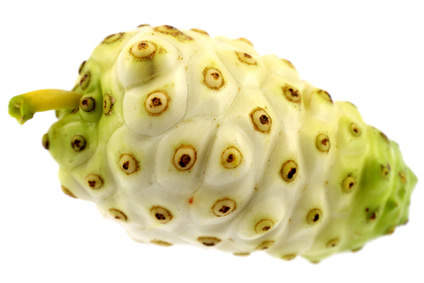 Noni possesses anti tumor activity by stimulating immune factors like Tumor Necrosis Factors (TNF), NK cells (Natural killer cells) etc. to attack the tumor. Noni has anti angiogenesis effect on tumor, hence inhibits tumor development. According to a study at the Louisiana State University Health Sciences Center, noni juice may have the potential to help disrupt the vascular networks that support cancerous tumors. In 2001, the Annals of the New York Academy of Sciences said that the antioxidant content of noni juice has reduced the formation of cancer cells in the body.
Noni possesses anti tumor activity by stimulating immune factors like Tumor Necrosis Factors (TNF), NK cells (Natural killer cells) etc. to attack the tumor. Noni has anti angiogenesis effect on tumor, hence inhibits tumor development. According to a study at the Louisiana State University Health Sciences Center, noni juice may have the potential to help disrupt the vascular networks that support cancerous tumors. In 2001, the Annals of the New York Academy of Sciences said that the antioxidant content of noni juice has reduced the formation of cancer cells in the body.
Noni is also considered as a rich source of a phytonutrient called damnacanthal that promotes good health of body cells. The compound has been proved to maintain the exact size and shape of cells by controlling their division. Another team of investigators reported that damnacanthal, a compound removed from the root of the noni plant, may inhibit a chemical process that turns normal cells into cancer cells. In a research published in June 2006 in Phytotherapy Research, noni juice was found to stop the spread of MCF 7 cells in lab tests. In a study reported in Nutrition and Cancer in 2009, 200 smokers who consumed morinda citrifolia for 1 month had reduced carcinogen-caused changes in their lung cell DNA. A team of scientists from the University of Hawaii, caused tumors to grow in mice and then investigated the results of treatment using specially prepared injections of noni juice. Mice who received the treatment survived 123% longer than the untreated mice.
Inflammation
One of most important uses is the treatment of painful inflammatory conditions, such as arthritis. Noni is proved to help reduce inflammation and strengthens the ligaments and bones. The juice helps in relieving the swelling and pain and increases the mobility. In vitro experiments with human white blood cells reported in the Jan 2010 edition of Phytotherapy Research demonstrated that noni stopped inflammation-causing proteins. Noni has shown similar results to called non-steroidal anti-inflammatory drugs (NSAIDs). A 10% solution of freeze concentrated noni puree in the drinking water of mice reduced the pain sensitivity comparably to the central analgesic drug tramadol. Research results; suggest that preparations of noni are effective in decreasing pain and joint destruction caused by arthritis.
Pain Relief
Xeronine is an alkaloid which is effective in repairing the damaged body cells. In addition to cell repair, xeronine is also helpful in regulating several types of proteins that have different types of functions to perform inside the body. Noni is used effectively as an analgesic, relieving pain without side effects. Xeronine creates a positive impact for normal cellular functions, and this in turn, may promote a general feeling of wellness, which decreases the pain messages to the brain. A scientific study at the University of Metz in France showed noni to be 75% as effective as morphine sulfate, without the harmful side effects.
Antibiotic
Recent research have suggested that noni juice exerts antibiotic action. Noni juice contains the natural antibiotics , Alizarin, Anthraquinone, Aubin and the antifungal Caproic Acids and Caprylic. Article reported in the 2006, of the American Journal of Chinese Medicine states that noni may provide positive effects to patients suffering from candida and other fungal infections by inhibiting the growth of the fungi.
Digestive
Noni both supports and stimulates the digestive process, promoting a more efficient breakdown of food into usable forms of nutrients. Anthraquinones from noni help stimulate the activity of the entire digestive process, increasing much needed secretions, enzymes and bile flow. Anthraquinones are also useful for pain relief and as a supplement in numerous health conditions.
Depression
Noni juice stimulates serotonin receptors in the brain increasing serotonin levels. The compounds in noni juice promote an increase in serotonin production, which will improve your mood and may also help any other symptoms related to low serotonin improve or disappear altogether. In a survey conducted of the 1000 people who consume noni juice for help with depression, 77 percent reported some of their symptoms decreased after drinking noni.
Nitric Oxide
New researchs have indicated that noni juice helps to stimulate the production of Nitric Oxide (NO), which is necessary to facilitate the performance of many of our bodies essential processes, and to strengthen our immune system, by stimulating the action of our immune systems cells. Nitric Oxide, which helps to regulate the cardiovascular system, helps increase blood flow, providing stamina and increased energy during intercourse.
Uses
Noni is available as the juice or liquid concentrate. 5 ml each twice a day during the first three days. 10 ml each twice a day from the fourth day onwards. Drink noni juice twice a day on empty stomach 30 minutes before food. It can also be found in capsule and tablet form. The nutritional value of noni depends upon the time of harvest primarily. Noni that is prematurely harvested will not ferment properly and its nutritional content will be less than when it is picked fully mature. Noni contains significant levels of proxeronine a precursor to the alkaloid xeronine. An enzyme in the body helps convert proxeronine into xeronine. This effect happens maximum when noni is taken on an empty stomach.
Noni Side Effects
Along with its positive effects, noni fruit contains potassium and sugar that may make it unsafe both for diabetics and for people in renal failure. Consult your doctor if on any medication or taking noni for any conditions requiring medical attention.
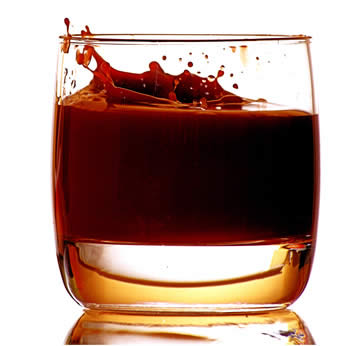 Goji contain special
Goji contain special 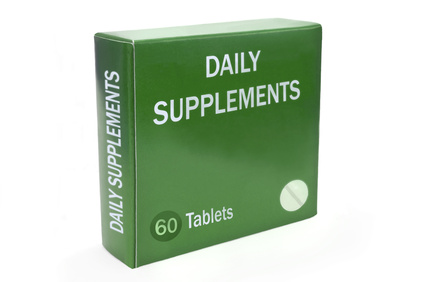 Pycnogenol helps to protect capillaries by binding to blood vessels walls and reducing permeability. Pine Bark Extract contains substances that might improve blood flow. Has been shown to improve endothelial function and blood flow. Pycnogenol, inhibits superoxide radical in blood flow, and protects blood vessel walls. The most positive improvements are in peripheral microcirculation. Corrects platelet activity which is responsible for the development of blood clots following vascular damage. Pycnogenol gives a protection against the cardiovascular risks by preventing the clotting of blood platelets, caused by smoking, and inhibits the nicotine-induced constriction of blood vessels. In a study, blood was drawn before and 2 hours after administration of a single pycnogenol dose. The results clearly showed a dose-dependent reduction of platelet activity. Already the lowest dose of 25 mg pycnogenol noticeably lowered the blood platelet activity. Next research revealed that pycnogenol inhibits release of thromboxane from platelets of cigarette smokers to levels of healthy non-smokers.
Pycnogenol helps to protect capillaries by binding to blood vessels walls and reducing permeability. Pine Bark Extract contains substances that might improve blood flow. Has been shown to improve endothelial function and blood flow. Pycnogenol, inhibits superoxide radical in blood flow, and protects blood vessel walls. The most positive improvements are in peripheral microcirculation. Corrects platelet activity which is responsible for the development of blood clots following vascular damage. Pycnogenol gives a protection against the cardiovascular risks by preventing the clotting of blood platelets, caused by smoking, and inhibits the nicotine-induced constriction of blood vessels. In a study, blood was drawn before and 2 hours after administration of a single pycnogenol dose. The results clearly showed a dose-dependent reduction of platelet activity. Already the lowest dose of 25 mg pycnogenol noticeably lowered the blood platelet activity. Next research revealed that pycnogenol inhibits release of thromboxane from platelets of cigarette smokers to levels of healthy non-smokers.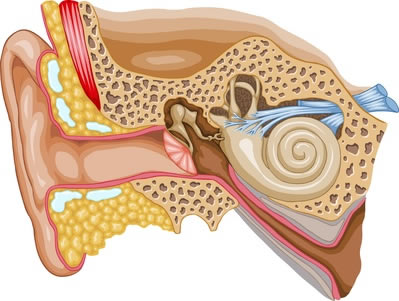 The word ‘tinnitus’ means tinkling or ringing like a bell. Episodes of tinnitus may be brief or it can be a permanent problem. In many people with tinnitus, the cause is not known. Some medications and other diseases of the inner ear can cause tinnitus. Tinnitus can in rare situations be a symptom of such important problems as a brain aneurysm or a brain tumor.
The word ‘tinnitus’ means tinkling or ringing like a bell. Episodes of tinnitus may be brief or it can be a permanent problem. In many people with tinnitus, the cause is not known. Some medications and other diseases of the inner ear can cause tinnitus. Tinnitus can in rare situations be a symptom of such important problems as a brain aneurysm or a brain tumor.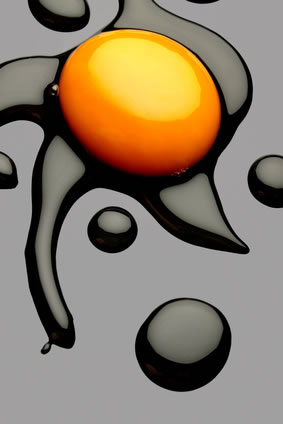 According to a 1995 study, increasing the consumption of dark green, leafy vegetables appears to offer some protection against macular degeneration. In a study of 380 people aged 66-75 years in the UK, people with lower blood levels of lutein plus zeaxanthin were more likely to have age-related macular degeneration.
According to a 1995 study, increasing the consumption of dark green, leafy vegetables appears to offer some protection against macular degeneration. In a study of 380 people aged 66-75 years in the UK, people with lower blood levels of lutein plus zeaxanthin were more likely to have age-related macular degeneration.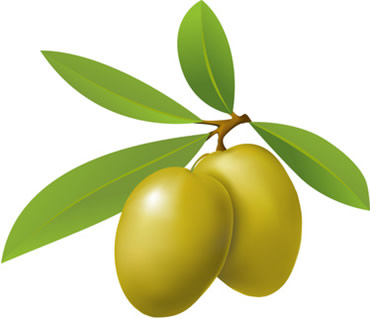 Other agent contained in oleuropein is
Other agent contained in oleuropein is